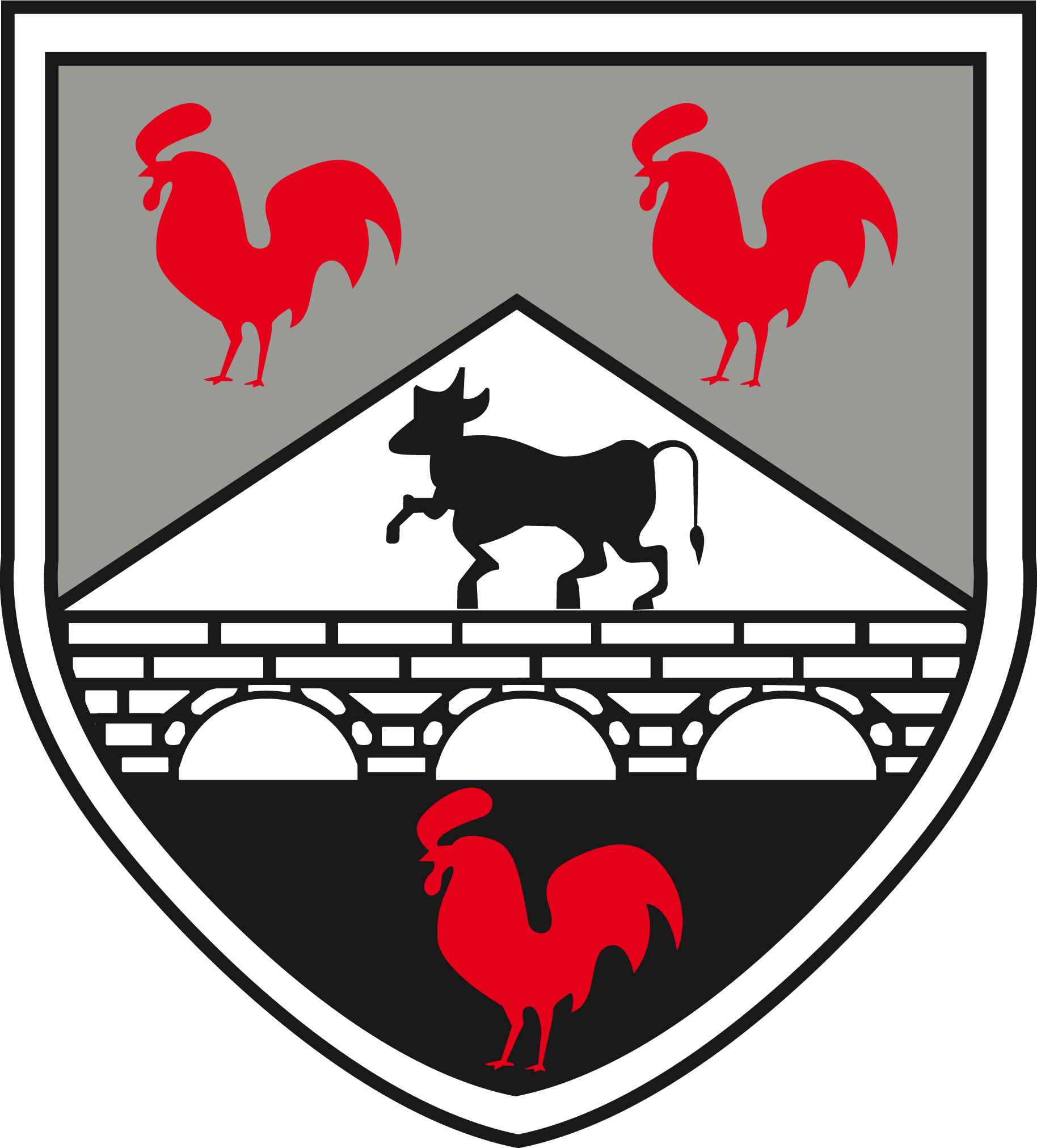
School Uniform
Cowbridge School believes that the school uniform promotes a sense of belonging, identity, community and cohesion within the school and, as such, we insist that all students who attend the School adhere to the School Uniform Policy. Student voice is an important aspect of the School’s ethos and the overwhelming majority of students who attend Cowbridge School support the requirement to wear a uniform. A list of ‘Frequently Asked Questions’ has been prepared by representatives of the student body and can be found attached..
The School pays due regard to Welsh Government statutory guidance (May 2023), particularly in securing equality of treatment between pupils and taking into consideration cost and affordability. Cowbridge School is a formal, professional environment and wearing a uniform that promotes these values helps to prepare young people for life beyond school and for occupations for which they may be required to wear a uniform or adhere to a particular dress code.
The Cowbridge School uniform does not dictate items of clothing on the basis of gender and is as follows:
-
School Tie (compulsory)
Years 7-11: Black with blue stripe.
-
School Jumper (compulsory)
Years 7-11: Black, red band on V-neck, embroidered school badge.
-
Skirt
Plain black skirt (neither too revealing or tight; no lycra). Skirt length must be no shorter than 5 centimetres above the knee.
-
Trousers
Plain black tailored trousers. No leggings or overly tight, revealing trousers will be permitted. No jeans/jeans style in black or otherwise.
-
Shirt/Blouse
Years 7-11: Plain white shirt that is suitable for tucking into skirt or trousers.
-
Footwear
Plain black (with no logos), low heeled footwear. Backless footwear or flip flops are not acceptable. High heels must not be worn. No other colour is acceptable.
-
Topcoat
A smart and practical all weather coat that can be worn over the uniform. Hooded, fleece style tops, denim clothing or leather jackets are forbidden for school use.
- Hair
Hair must be of natural colours only. It is not permissible to have any part of the hair in unnatural colours or shades of unnatural colours e.g. pink, blue, green, yellow etc. No tram lines, including insignia and patterns, are permitted in any length of hair. In practical areas, hair which is shoulder length or longer must be tied back.
-
Make-Up
Make-up may be worn; however, it needs to be natural and suitable for a professional workplace. No false eyelashes, lipstick or excessive make-up is permitted.
-
Jewellery
Jewellery is restricted to a watch and one pair of small studs. No other jewellery is permitted. Earrings must be small and not extend beyond the earlobe to ensure health and safety of all.
-
Nails
Nail varnish may be worn; however, it should be of a discreet colour. Nails must be of a safe, practical length so as not to cause injury to self or others. No false nails or extensions are permissible as this breaches health and safety.
-
Physical Education
Black t-shirt / polo shirt;
Black shorts / black skirt;
Long sleeve, durable sports top (for warmth);
Black sports socks;
Sports trainers / boots, suitable for the activity;
Black tracksuit bottoms (optional);
Shin pads for hockey / football;
Gum shield (advised).
(Students are not required to wear a designated school sports kit with a logo.)
Parents/carers are required to support the School’s uniform rules and, as such, we ask you to ensure that anything you purchase for your child complies with the above. Failure to comply with the above uniform code will result in your child being asked to change or being sent home to remedy the non-adherence. No student will be required to leave school without parental/carer contact and permission but, should staff be unable to contact parents/carers, students will be educated away from their timetabled lessons.
All items of clothing may be bought at any store, as long as the correct colour/style is adhered to. Badged items and school ties are available from The Pencil Case, Cowbridge and Uniform2Go, Bridgend. Please contact the school if you have a query regarding suitable styles or suppliers; financial support to purchase the school uniform is available to families who meet certain criteria.
School Uniform: Frequently Asked Questions
These FAQs have been prepared by student representatives.
Why do we have to wear a uniform?
Having a uniform just makes sense. It’s easier not to have to think about what to wear every day and it removes the pressure of having to impress our peers with our choice of clothing. We’ve all heard comments being made about what people are wearing on non-uniform days and having a uniform means that everyone is equal and not judged based on what they wear. A school uniform also creates a sense of community and belonging; it allows us to be united as students. It also prepares us for possibly having to wear a uniform in our future places of work and, finally, it reduces the cost for our parents who, we know, would be asked to buy ‘school clothes’ and ‘home clothes’.
What is the rule about jeans/leggings?
This is an easy one: jeans and leggings - and anything that looks like them - are banned.
The uniform policy refers to “tailored” trousers - what are they?
These are the main types of tailored trousers: straight leg, bootcut, wide leg, slim fit, tapered at the ankle. Tailored trousers don’t look like jeans or leggings and are comfortable because they’re not too tight.
Why can’t I wear jeans/leggings if they are black?
School is a place of formality and professionalism. Jeans are casual and informal and leggings are for exercise.
What is the rule about skirts?
The skirt should be no more than 5 cm above the knee; this is approximately the width of a bank card. The skirt you wear has to be black and must not be too revealing or tight. This means that lycra (or similar stretchy material) is not acceptable.
Why is the length of the skirt important?
The length is important for the same reason that jeans and leggings are banned - it’s about looking smart and maintaining the formality and professionalism of school. There is a time and place for short skirts - just not in school. Also, when sitting down, short skirts are uncomfortable!
What is the rule about shoes?
No heels/sandals/flip flops/backless shoes are allowed. Otherwise, they just have to be completely black (although something durable is advisable).
Why can’t I wear a hoodie - it’s more comfortable than the school jumper?
Again, this is down to smartness, formality and professionalism. Hoodies are casual. Some students say they find the school jumper “itchy” - if this is the case, we can choose the 50/50 jumper (it’s 50% cotton so it’s softer) or wear a long sleeved shirt/blouse so that the jumper doesn’t touch the skin.
Why can’t we have a summer uniform, for example, shorts?
Having a summer uniform would increase the amount of money our parents have to spend on uniform. The Welsh Government has introduced guidance that requires schools to keep the cost of uniform as low as possible so our school has the same uniform all year round. We might feel under pressure to wear the summer uniform if all of our friends were wearing it and this could cause us to put pressure on our parents to buy it for us, without realising that they can’t actually afford it.
What is the rule about jewellery?
This is straightforward: we can wear a wristwatch and one pair of stud earrings - one earring in each earlobe.
What difference does having more than one earring in my ears/wearing long earrings/having a nose ring/wearing rings on my fingers/wearing bracelets or necklaces make to my learning?
Wearing jewellery might not affect how we learn - but it could. It can be a distraction, for example, getting involved in a conversation with friends during a lesson about what we are wearing. The main reason, however, is health and safety. There are certain subjects - practical subjects like PE, DT, etc. - where wearing jewellery could be dangerous because it could get caught and pulled, which may lead to injury. Additionally, at break and lunchtime, many students play sports or just run around and the jewellery could get caught on clothing or equipment. We might say that we would take it off for practical lessons and at break/lunch but, in all likelihood, we would forget to do this so it’s easier (and safer) to limit it.
What if my culture or religious beliefs requires me to wear something that does not fit (or is not covered by) the uniform policy?
Speak to the Leader of Achievement or Senior Leader attached to your area of the school - Sixth Form, Senior School or Middle School. They are understanding people; they will listen.
How can I avoid being told off by staff about my uniform?
All we have to do to avoid conflict about uniform is try our hardest to follow the policy; if we are unsure about anything, we can ask the pastoral staff attached to our year group for clarification. Most difficult conversations with staff about uniform centre around skirts, jeans/leggings and jewellery. We need to do our best to wear what is allowed. Finally, we know best, from conversations with staff, what is and is not allowed. Therefore, we should go shopping with our parents when we need a new uniform and choose items that we know meet the requirements of the policy.
